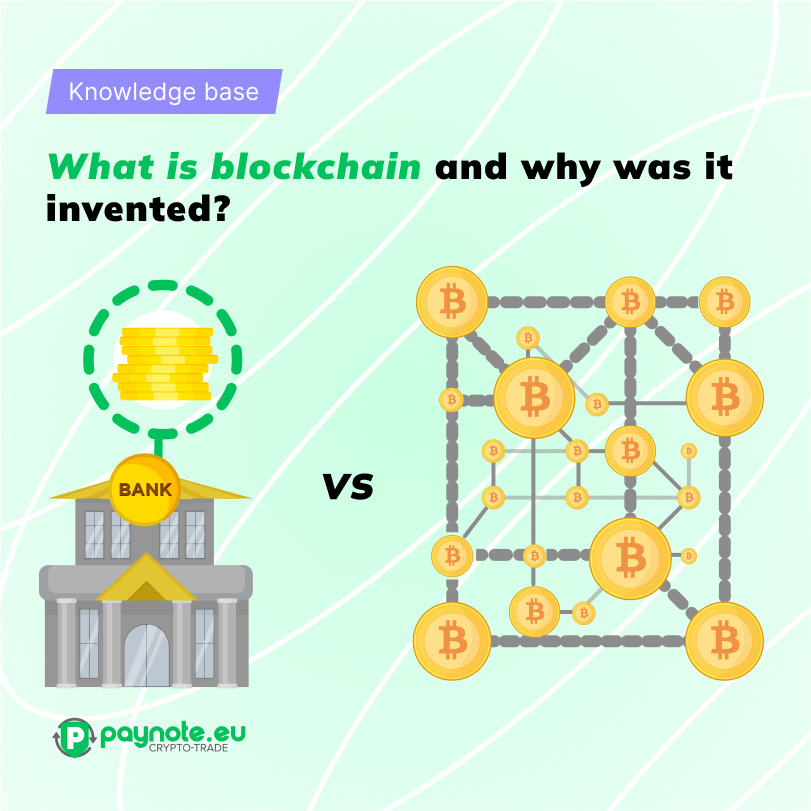
Blockchain is a distributed database organized as a chain of blocks, each of which contains information about transactions and events. These blocks are chronologically ordered and reliably linked to each other.
Basic Blockchain Components
- Blocks : The basic building units of a blockchain that contain data.
- Blockchain : Communication between blocks that ensures data integrity and reliability.
- Decentralization : A network of participants who support the blockchain and its security.
- Cryptography : Used to ensure confidentiality and security of data.
Why was blockchain invented?
Blockchain History
- Emergence of technology : The beginning of blockchain is associated with the emergence of the Bitcoin cryptocurrency in 2009.
- Initial purpose : The idea was to create a decentralized digital currency without the participation of banks and states.
Main purposes of blockchain
1. Decentralization
Blockchain allows network participants to exchange data and value directly, bypassing intermediaries such as banks. This improves accessibility and reduces fees.
2. Safety and reliability
Information stored on the blockchain is protected using cryptography. This makes the data resistant to hacking and manipulation.
3. Transparency
Transactions on the blockchain are visible to all network participants, which ensures transparency and trust.
4. Smart contracts
Blockchain also allows for the creation of smart contracts—programs that automatically execute agreements when certain conditions are met.
5. Eliminate double spending
Blockchain eliminates the problem of double spending of digital assets as every transaction is recorded on the block chain.
Practical applications of blockchain
1. Cryptocurrencies
Cryptocurrencies such as Bitcoin and Ethereum are the most famous examples of blockchain use cases. They allow users to make secure and decentralized financial transactions.
2. Supply and logistics
Blockchain allows you to track the origin and movement of goods in real time, reducing risk and providing transparency in the supply chain.
3. Healthcare
In the medical field, blockchain helps in managing medical data and ensuring patient privacy.
4. Voting
Blockchain can be used to conduct secure and authentic elections, eliminating the possibility of vote manipulation.
5. Music and art
Artists and content creators can use blockchain to manage copyrights and monetize their works.
Conclusion
Blockchain is an innovative technology created with the goal of decentralization, ensuring security, and increasing transparency in various areas of life. It has found applications in finance, logistics, healthcare and other fields, and its potential continues to grow. Developers and entrepreneurs continue to explore new ways to use this unique technology to improve our world.









